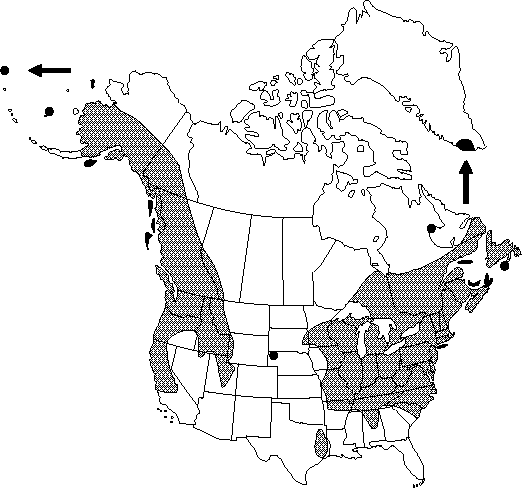Ranunculus repens
Sp. Pl. 1: 554. 1753.
Stems decumbent or creeping, rooting nodally, hispid to strigose or almost glabrous, base not bulbous. Roots never tuberous. Basal leaf blades ovate to reniform in outline, 3-foliolate, 1-8.5 × 1.5-10 cm, leaflets lobed, parted, or parted and again lobed, ultimate segments obovate to elliptic or sometimes narrowly oblong, margins toothed, apex obtuse to acuminate. Flowers: receptacle hispid or rarely glabrous; sepals spreading or reflexed from base, 4-7(-10) × 1.5-3(-4) mm, hispid or sometimes glabrous; petals 5(-150), yellow, 6-18 × 5-12 mm. Heads of achenes globose or ovoid, 5-10 × 5-8 mm; achenes 2.6-3.2 × 2-2.8 mm, glabrous, margin forming narrow rib 0.1-0.2 mm wide; beak persistent, lanceolate to lance-filiform, curved, 0.8-1.2 mm. 2n = 14, 32.
Phenology: Flowering late winter–summer (Mar–Aug).
Habitat: Meadows, borders of marshes, lawns, roadsides
Elevation: 0-2500 m
Distribution

Introduced; Greenland, St. Pierre and Miquelon, Alta., B.C., N.B., Nfld. and Labr. (Nfld.), N.S., Ont., P.E.I., Que., Yukon, Ala., Alaska, Ark., Calif., Conn., Del., D.C., Idaho, Ill., Ind., Iowa, Ky., Maine, Md., Mass., Mich., Minn., Mo., Mont., Nebr., Nev., N.H., N.J., N.Y., N.C., Ohio, Oreg., Pa., R.I., S.C., S.Dak., Tenn., Tex., Utah, Vt., Va., Wash., W.Va., Wis., Wyo., Central America, South America, native to Eurasia, Pacific Islands, Australia.
Discussion
Ranunculus repens is widely naturalized in many parts of the world. Plants with sparse pubescence have been called R. repens var. glabratus. Horticultural forms with the outer stamens transformed into numerous extra petals occasionally become established and have been called R. repens var. pleniflorus. These variants have no taxonomic significance.
Selected References
None.